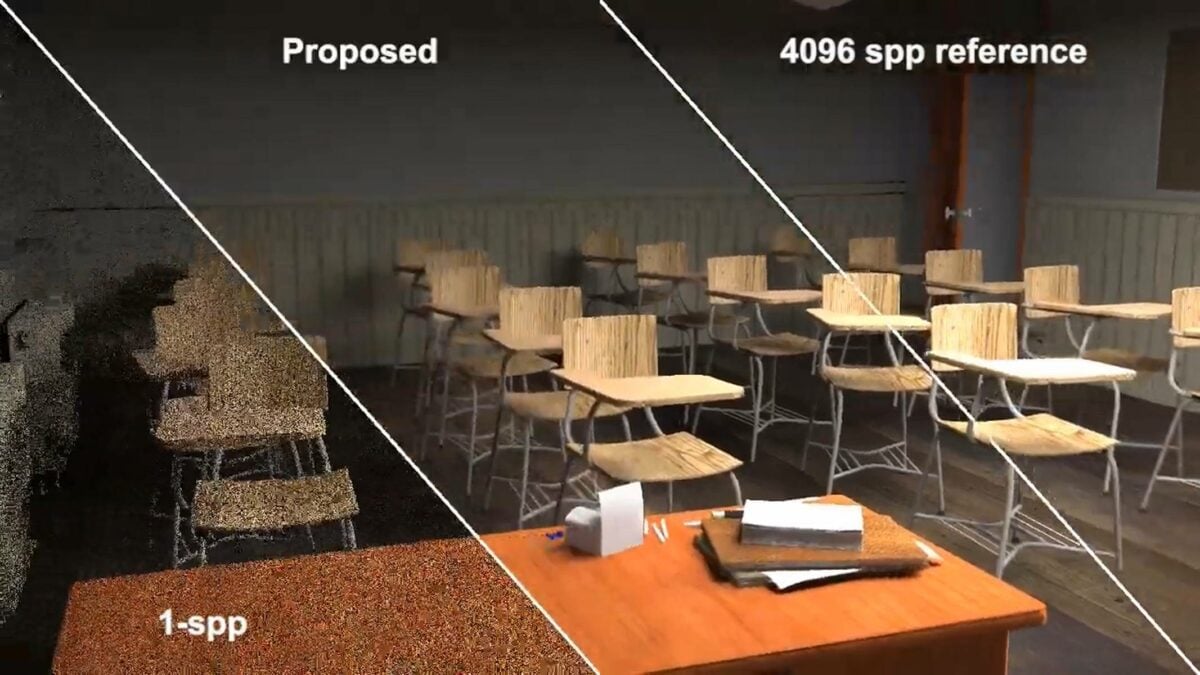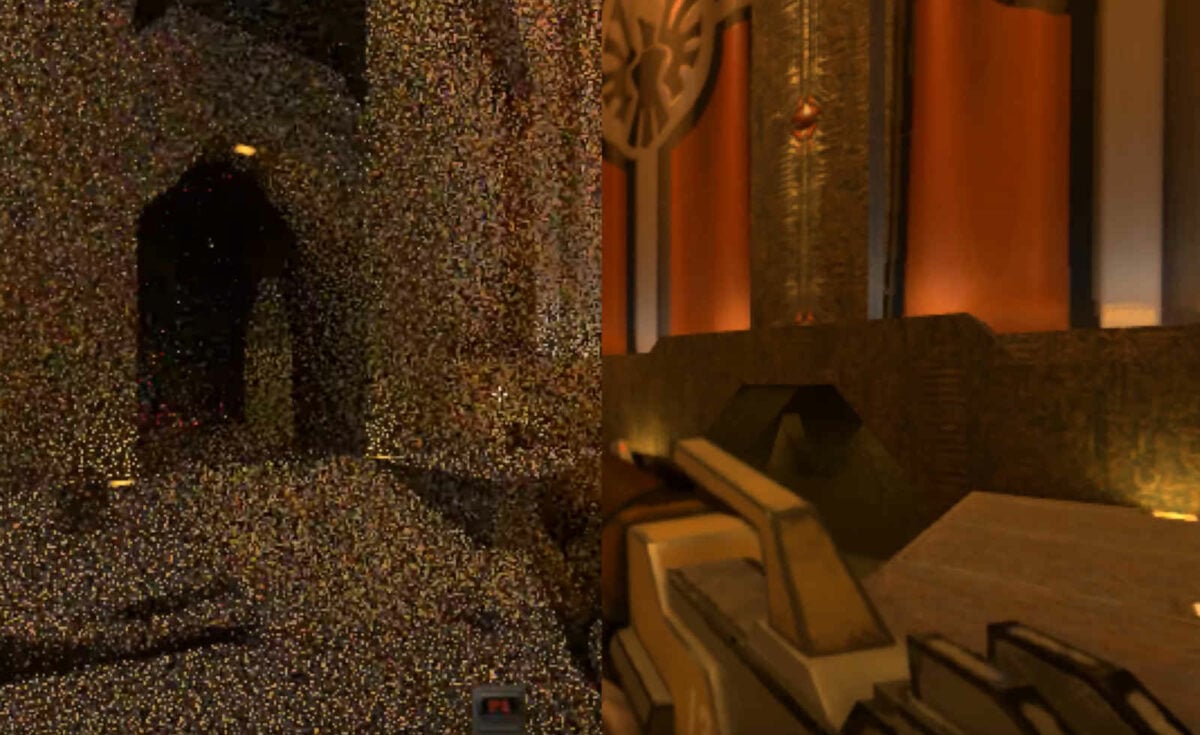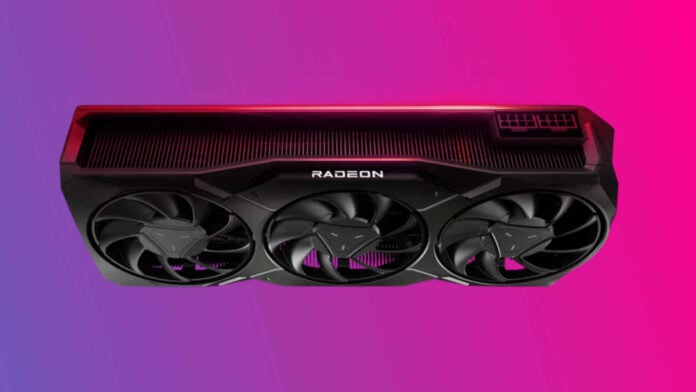AMD is developing its own tech to tackle ray tracing and path tracing noise. The brand is leveraging the power of neural processing to chew through this task at minimum compute cost.
According to a paper published on GPUOpen, AMD is seemingly researching Monte Carlo denoising solutions accelerated using neural techniques. The idea is to offer a technology capable of real-time path tracing on RDNA-based GPUs. Currently, the brand aims to reach the following goals:
- Spatially and temporally reconstruct outstanding quality pixels with fine details given extremely noisy images rendered with 1 sample per pixel.
- Use minimal input by taking a noisy colour image as input instead of separated noisy diffuse and specular signals.
- Handle various noise from all lighting effects with a single denoiser instead of multiple denoisers for different effects.
- Support both denoising-only and denoising/upscaling modes from a single neural network for wider use cases.
- Highly optimised performance for real-time path tracing at 4K resolution.
AMD aims to leverage neural networks to clean a noisy one sample per pixel (1-spp) image, delivering a resolve only possible through a much higher spp count. Check the image below to get an idea of how much denoisers can improve the 1-spp ray tracing result. Having such capabilities built into the GPU means that games and apps can shoot fewer rays to deliver a convincing scene, thus improving performance.

Denoisers are an integral part of ray traced images. Without them, your computer has to draw countless rays to reach an acceptable level of image clarity, making ray traced games impossible. While not perfect, denoisers can deliver a good enough quality on consumer hardware. You can check these effects yourself using Quake RTX, which allows you to turn off certain options in real-time – see the picture below. Note that in movement, the noise is slightly less visible than in static images.

Moreover, if AMD integrates AI capabilities into its GPUs, there is no reason not to use them for FSR upscaling. A neural-based upscaler could finally bring FSR to the level of Nvidia’s DLSS, giving users a stable image alongside high performance. This will be especially handy if the rumours regarding the lack of high-end GPUs on the Radeon 8000 Series are correct.
Like Intel’s DP4a XeSS, FSR is hardware agnostic, able to boost performance even on old hardware regardless of the brand. This makes us wonder if these upcoming FSR and real-time path tracing are compatible with existing Radeon GPUs. What’s sure is that we are in for a noticeable change in how RDNA handles ray tracing, which supports AMD CEO’s claim of better ray tracing performance on upcoming GPUs.
Seeing how Nvidia’s path tracing implementation improves Cyberpunk 2077’s lighting, I can’t wait to have the same quality on Radeon hardware without the current performance cost.

